
Email Marketing Frequency: How Often Is Too Often? [2025]
Send too many emails and you’ll overwhelm recipients, perhaps even annoy them. Send too few and they’ll forget all about you.
So how often should you hit “send?”
The answer isn’t as simple as one or the other. Finding the right email frequency is about striking a balance and adapting to your subscribers’ needs and habits.
In this post, we’ll explore cases where regular communication makes sense. Also, we’ll list other factors that work together with email marketing frequency, so every message you send offers immediate value to your audience.
Relevant and steady wins the inbox race
Deliver value like clockwork with Moosend’s email tools.
Start freeWhat is the Best Email Marketing Frequency?
Unfortunately, there’s no short or entirely right answer to how often marketers should send emails. Many opt for a bi-weekly or monthly schedule, while some spread out their email campaigns over a two-month period or even more.
The truth is, it always depends on parameters like your industry, business size, and goals. But the common denominator is always subscribers and their interests.
When Does High Frequency Lead to Email Fatigue?
One thing we all know is that inboxes are crowded. The average recipient gets showered with emails on a daily basis. A large percentage of which are sales pitches that promote instead of educating or informing. On top of that, some are generic email blasts, therefore irrelevant.
Positive engagement, like opens and clicks, drops if low-quality emails keep landing in recipients’ inboxes one after the other. This constant flow of one-size-fits-all, sometimes poorly timed, campaigns results in email fatigue.
To manage it, recipients take various actions. They might open yet ignore emails, mass delete them, or, in the worst-case scenario, mark them as spam or unsubscribe. Over time, this becomes an exhausting chore that makes them miss even potentially valuable emails.
When Do Regular Emails Lead to Engagement?
As recent findings show, 69% of consumers hit ‘unsubscribe’ because they receive too many emails from a business. But email frequency isn’t the only one to blame. The other top reasons why people opt out are content-related: 56% mention irrelevance, and 51% cite unmet expectations.
What these findings indicate isn’t that regular emails don’t work. It’s that they don’t unless the subscriber has something to gain from every communication. Therefore, we must consider it a value-related issue rather than a scheduling issue.
Email marketing frequency best practices suggest that, when emailing subscribers often, the content should feel relevant and inspiring. For instance, walk them through products or features, keep them up to date with new practices and trends, or help them with their goal setting.
Frequent email sends can resonate with your audience as long as they’re well-timed, personalized, and consistent. That way, they’ll expect your email campaigns, rewarding you with their attention at every communication, no matter how often that is.
Moving from theory to practice, it’s time to explore some use cases where regular emails not only work but also bring value to subscribers.
Use Cases Where Frequent Email Sends Work
Not every campaign objective justifies frequent email sends, even when value-packed. Sometimes, you just need to send a single email, for example, to inform recipients about upcoming changes in pricing, shipping, and return policies.
However, there are use cases where you may increase your email marketing frequency.
Weekly or daily newsletters
Recipients appreciate brands that show up without trying to sell every time. A weekly or daily email newsletter can serve multiple purposes, including educating, informing, and entertaining customers.
Here are some of the ways you can use a regular newsletter to add real value to your conversations with your recipients:
- Industry news: Short brief on industry trends that keep subscribers informed in real time.
- How-to guides: Helpful content in the form of guides, tutorials, and demos so your audience easily discovers the benefits of your offerings.
- Product or feature updates: Product or feature updates that educate recipients without feeling like a sales pitch.
- Content roundups: Collection of top recent resources, such as blog posts and reports, to offer busy readers solutions to their pain points.
- Community engagement: Testimonials, reviews, and social media highlights to promote a sense of community.
Take Playbook, for example. Their daily newsletter delivers key business updates. In every email, they include a dedicated section called “Quick Hits” with short, actionable tips that allow recipients to catch up on everything new at a glance.
Subject line: The Single-Strike Funnel That Converts

Onboarding sequences
Every new user or customer may require assistance in the early stages of their journey. Some businesses opt to send a single welcome email to introduce their brand to their audience.
But a perfectly timed onboarding sequence can do so much more than that. By delivering these emails at regular intervals (daily, every 2-3 days, or weekly), you help subscribers navigate through your products and services, one step at a time.
This way, you reduce cognitive load for them, giving them the tools to absorb information at their own pace. This tactic is particularly effective for SaaS email marketing, where users appreciate mini-lessons in digestible formats (e.g., videos) that familiarize them with the product.
Besides offering guidance, you can use an onboarding email series to:
- Share the story and vision behind your brand
- Introduce founders and team members
- Feature case studies and customer testimonials
- Suggest products or services
- Invite recipients to your social media channels
MONTEC’s onboarding campaign asks subscribers to follow the brand on Instagram so they can enjoy perks like watching behind-the-scenes content.
However, they also suggest trying their designated tool to create their ideal winter look. This serves as a subtle way to promote their products.
Subject line: Meet the MONTEC crew ⛷️

Milestone emails
Who doesn’t love milestones? So do subscribers. When brands care enough to remind them of meaningful moments in their customer journey, they’re eager to join the party.
It might be their anniversary with your brand, a milestone with your product or service, or simply their birthday. Milestone emails are a perfect opportunity for personalized campaigns that make subscribers feel unique and appreciated.
If they stay engaged, they expect these emails to land in their inboxes, reminding them of their goals and how far they’ve come. Therefore, bi-weekly and weekly emails make total sense here. However, you should be strategic about the milestones you choose.
Let’s take an audiobook app. Milestone emails might lose their meaning if they land in the reader’s inbox every time they finish a book. Instead, an email that comes after they’ve completed a listening challenge they’ve set acknowledges their progress and keeps them motivated.
Grammarly takes this idea further by highlighting how the subscriber compares to the average user and shows the time or activity left to reach the next milestone. We also love the fun fact detail, which is reason enough to wait for future messages (at least for us).
Subject line: You’ve reached a new weekly streak milestone!

Seasonal campaigns
For marketers, holidays mark that time of the year when they expect to drive more sales.
For their audiences, it’s when they need help setting goals, experimenting with decorations, makeup, and recipes, finding the perfect gift, or treating themselves to something nice.
Therefore, frequent email content that addresses these challenges is welcome. But these campaigns should be timely and relevant. Also, remember that not all seasonal emails go for a hard sale. So, invest in educational and engaging content, such as practical tips, themed videos, and holiday-specific polls.
Seasonal email marketing works on more occasions besides holidays. For instance, a food and beverage company may deliver back-to-school emails in September with meal ideas to ease the “what’s for lunch” headache for busy parents.
It doesn’t take much to deliver beautiful seasonal emails. Predesigned email templates for different holidays and occasions are a great starting point. Using a drag-and-drop editor like Moosend’s, you can customize the design in minutes to reflect your branding and needs.
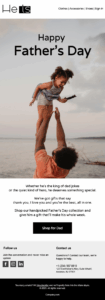
Let’s say you want to create a Father’s Day email to share gift suggestions. The above template could serve as a canvas. Adding authentic copy, high-quality visuals of your products, or customer testimonials are just a few of the meaningful tweaks to make.
Email Marketing Frequency Best Practices to Boost Engagement
Even when the objective calls for regular communication, adopting it without falling into the disengagement trap is no easy feat. That’s why you need to follow some key email marketing practices so your emails feel like a priority instead of a chore.
Be consistent with email volume
Email marketing isn’t a one-and-done effort. To stay top of mind, you need consistent communication. Go silent for a few weeks or even months, and subscribers will forget your brand.
But if you stick to a sending schedule, you train subscribers to expect your emails at specific times. So, they’ll think of your products or services the next time they’re looking for new arrivals or solutions.
Plus, consistency in email marketing makes list cleaning easier. When you adopt regular sending, you have a clearer idea of who’s engaged and who’s not. So, when you remove inactive addresses, you know they’ve lost interest; not just ignoring your emails because you didn’t show up.
Mind the timing
Let’s say you find the ideal email cadence. If your emails catch subscribers at an inconvenient time, they’ll still go unnoticed. So, it’s not just how often you email them but also when.
How will you know what’s the optimal email sending time? Based on Moosend’s analysis of 10B emails, Thursday is the best-performing day, and 8-9 am is the best day in terms of open rate:
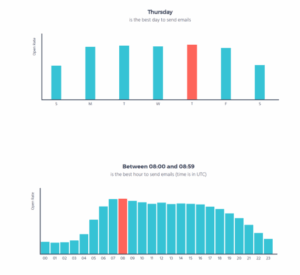
Therefore, sending emails on Thursdays during this timeframe is a good rule of thumb. However, as with everything in email marketing, it takes some trial and error to confirm what works.
A good starting point is to check industry benchmarks to understand what to expect. However, even if you share common ground with your competitors, this still won’t provide the entire picture.
What you need to do is A/B test your campaigns, sending the same email at different times. Then, analyze the results to tell which time aligns with your subscribers’ habits. Also, always review your email metrics to identify when your emails receive the highest engagement.
You can also take a look at our email marketing benchmarks guide to compare your email performance based on industry insights easily.
Personalize your email messages
As mentioned, sending many emails isn’t a bad email frequency practice. What matters is that each message, even if frequent, is crafted just for that person reading it. Entering email personalization.
To do it right, you first need to create detailed and up-to-date segments. Group your audience based on their demographics, interests, and behavior. Then, use these shared characteristics while also tracking their interactions to personalize your content.
Here are a few examples:
- Add personal details, like the subscriber’s name or location, directly into the email
- Trigger campaigns based on their activity, such as viewing a product or attending a webinar
- Use dynamic content to display different products, services, and visuals, e.g., suggesting local events based on the contact’s location
- Deliver emails when each segment shows optimal engagement
With these tweaks, you turn your email campaigns into impactful touchpoints that cater to each reader’s needs.
Personalized email content doesn’t need much. Spotify’s campaign is a great example of regular yet targeted communication, taking into account the subscriber’s history to deliver music recommendations every Friday.
Subject line: New music from BØRNS & more artists you love: listen now in Release Rad
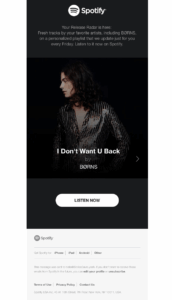
Keep content and design simple
We all scroll past emails that look cluttered or hard to read. So, how can you ensure a different outcome? By getting straight to the point. Clean and straightforward emails cut through the noise, conveying your message quickly and effectively.
The subscriber has less skimming to do, which offers a sense of focus. The result? Your message and email CTA instantly grabs attention. And that’s when conversions happen.
This is how to achieve that:
- Make it easy to read: Short paragraphs, descriptive headings, white space, and clear sections help readers quickly scan your email.
- Use simple language: Straightforward and jargon-free wording communicates the value of your message in a natural and relatable way.
- Avoid visually crowded designs: Limit visuals to a few impactful and non-intrusive elements to minimize distractions and eye strain.
- Have one clear objective: A single campaign goal reduces pressure for busy people who prefer to focus on one action at a time.
- Highlight key information: Make your core message pop using bold or underlined text and place it at the top of the email to guide readers’ attention.
In the following birthday request email, Ray-Ban does everything right, with a powerful headline, a clean layout, concise copy, an image of people wearing their stylish sunglasses, and an actionable CTA.
Subject line: Get a birthday reward on us
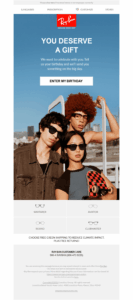
Hand control over to your audience
When a new subscriber joins your list, it’s a good practice to be upfront about the email volume they can expect to receive. It’s a gesture that signals transparency and credibility.
But there’s more to earning their trust. During the email signup process, allow visitors to select their preferences, adjusting the frequency and type of emails they wish to receive. This way, the process sounds more like a discussion instead of a transaction.
If you don’t have that option in your signup form, consider adding a link to your preference center in your regular emails, usually placed in the footer. You can even send a dedicated campaign asking subscribers to update their preferences.
This is how you give recipients control, allowing them to adjust their communication with your brand to their real-time preferences.
Just like Amadeus Hospitality does, including several email types in the option, so they can deliver laser-focused content to their readers:
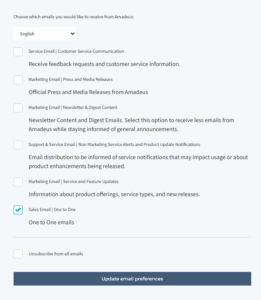
By letting them do the talking, the brand saves time from figuring out what they need while offering an optimized experience.
Many email marketing platforms, like Moosend, come with an email preference center feature. With it, you can quickly set different communication options and segment your audience based on their choices.
Test various email frequencies
Recipients may share attributes and interests, but they also have unique engagement habits. One of them involves how often they want to receive emails from brands and when.
A/B testing is the most surefire way to check how each subscriber responds to your sending frequency. With regular testing, you can try out various email cadences to smaller segments of your list.
Afterwards, compare key performance indicators like clicks, conversions, unsubscribes, and bounces to see which frequency results in more interactions. Besides frequency, test other parameters like the sending time, copy, design, and CTAs. Be sure to check one element at a time for more accurate results.
Monitor email deliverability
The best campaign idea paired with a great subject line and content will do no good if you can’t reach inboxes. That’s why experimenting with email marketing frequency should go hand in hand with a solid email deliverability strategy.
Sending more emails is likely to turn off some subscribers, causing poor engagement, unsubscribes, and spam complaints. These email metrics are all red flags to inbox service providers and may hurt your sender reputation if left unmonitored.
Constantly tracking deliverability helps you safeguard your reputation.
Still, don’t assume that email frequency is the only parameter here. Deliverability issues often point to other factors like weak email authentication, poor list hygiene and segmentation, and low-quality content.
And then there’s IP warm-up. This process involves gradually ramping up the email volume, avoiding tactics such as sending bulk emails during the first weeks. That way, you build credibility with inbox providers and trust among recipients.
It All Comes Down to Respecting Your Audience
Email frequency is just one piece of the puzzle. Like any other tactic, it only bears fruit if you keep your audience at the center. Whether it involves timing or content, in the end, it’s all about respecting your readers’ wishes.
The key is to treat every email like a subscriber-centric dialogue: let subscribers set the pace, pay attention to their signals, and send campaigns that deliver on their needs.
And if these needs change, your strategy should follow along because the brands that get attention are the ones that actively prove, with every single message, that they’re listening.
FAQs
Now, let’s review some common questions about email marketing frequency.
1. What is the difference between email frequency and email cadence?
Email frequency refers to how often brands send emails to their audience (e.g., daily, weekly, monthly). Email cadence, on the other hand, is the pattern you use when sending emails, including the timing, spacing, and sequence.
2. What’s the best time to send an email campaign?
There isn’t a one-size-fits-all sending time, as it depends on your industry, as well as your audience’s preferences and habits. You should test different days and times, track email KPIs, and adjust based on subscriber engagement.
3. Are B2B and B2C email marketing frequency the same?
B2B audiences often prefer fewer, informative emails that address their pain points and help them make decisions. B2C subscribers may accept a higher frequency, especially around sales and promotions, but they still expect valuable content.
4. Should you change your email frequency during holidays and different seasons?
Adjusting your email frequency during peak seasons like holidays and special days makes sense since recipients may expect (and even welcome) more frequent updates. Whereas in quieter seasons, it’s usually better to scale back to avoid email fatigue. However, it also depends on your campaign goal and audience segment.
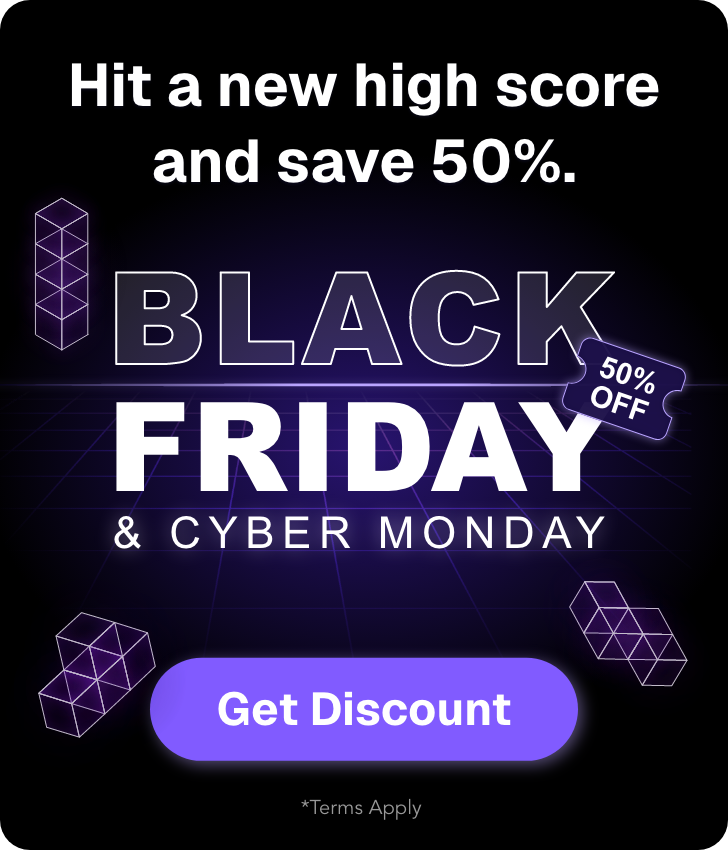

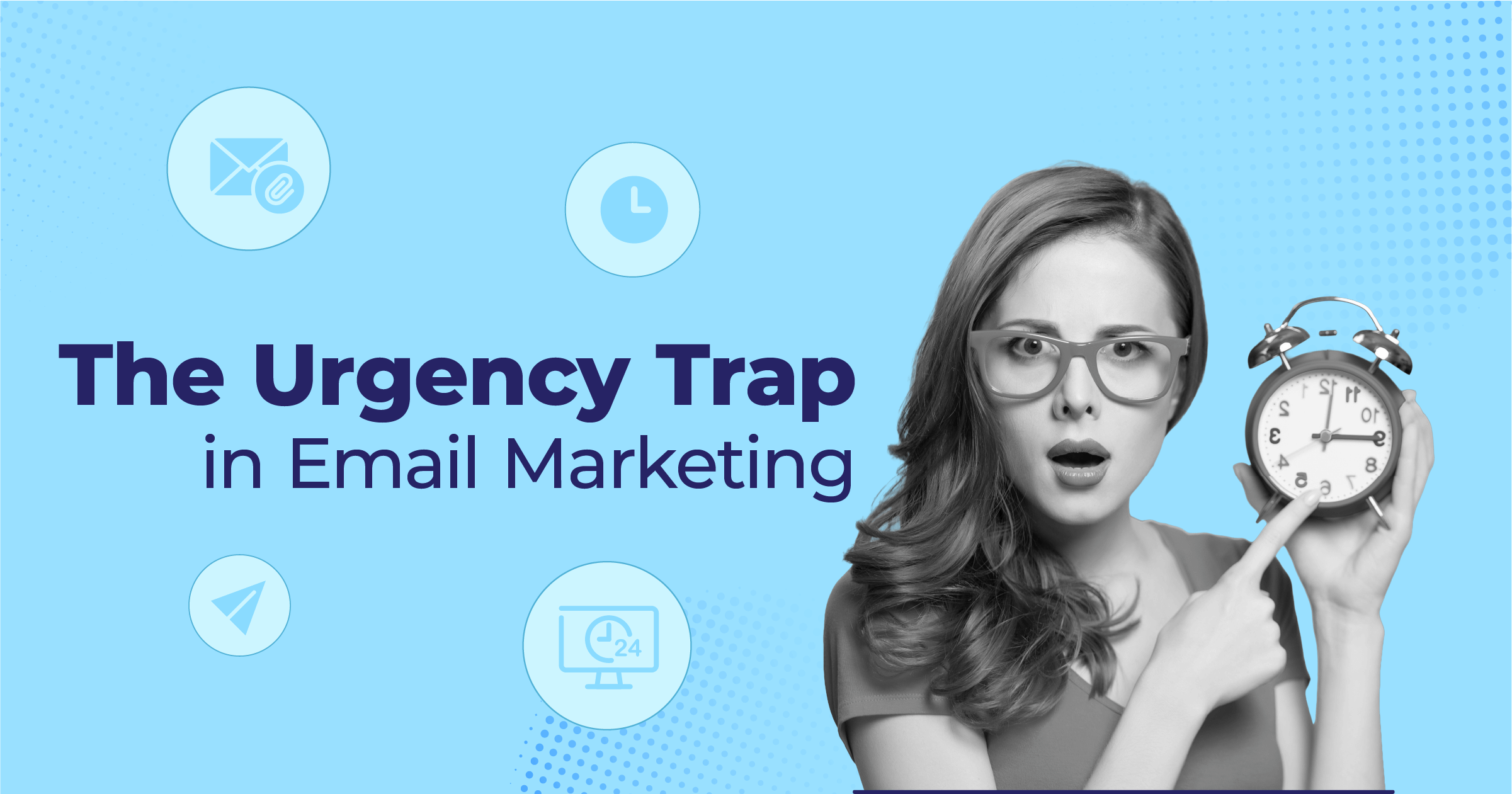
 Published by
Published by
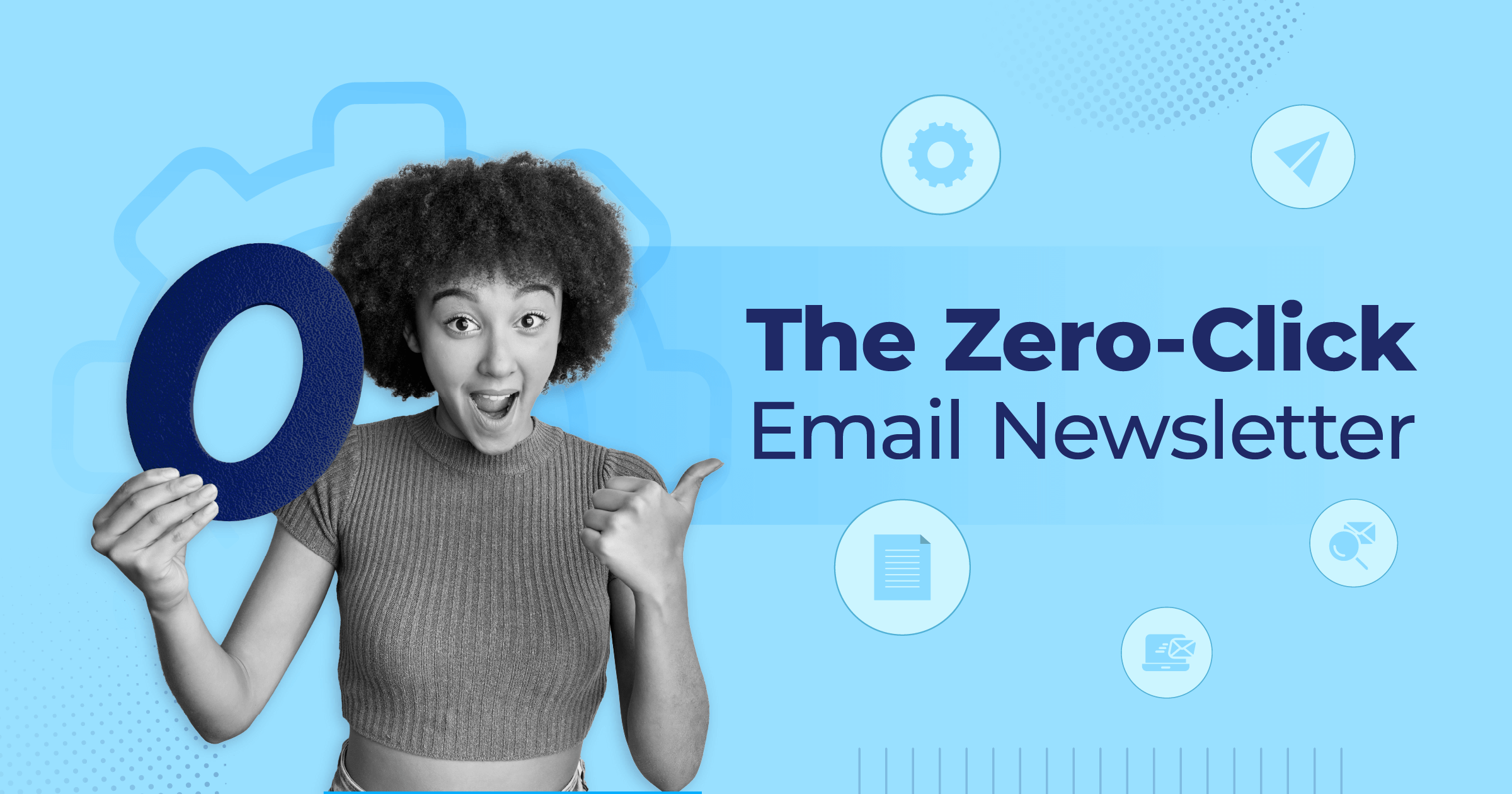
 Published by
Published by
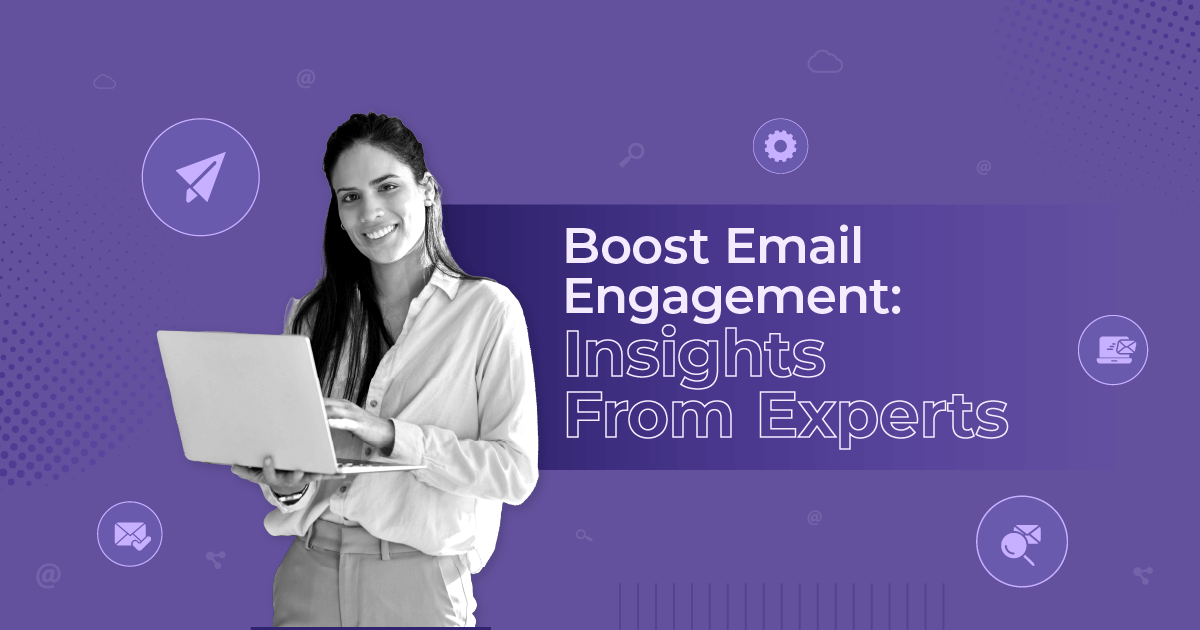
 Published by
Published by